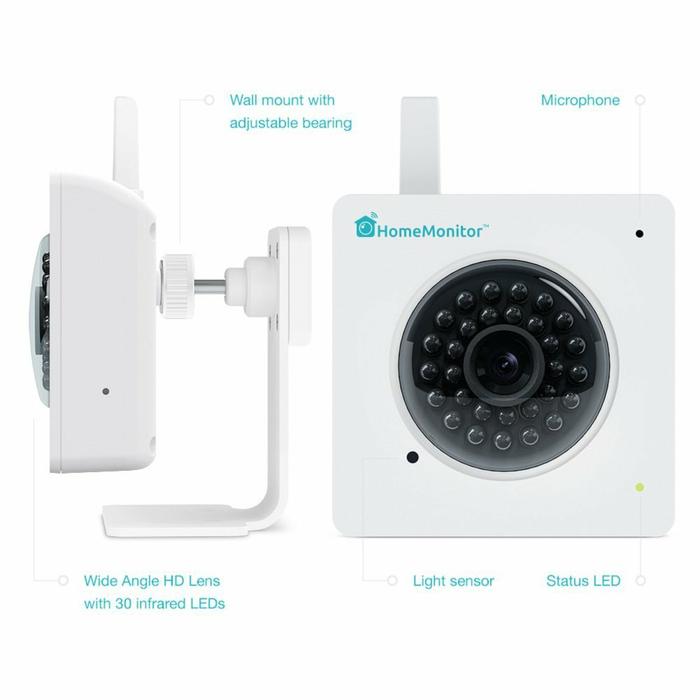Introduction
Home-security cameras are growing in popularity as consumers seek to bring the advantages of the Internet of Things (IoT) to new aspects of daily life. Y-cam is a company seeking to take advantage of this trend with a simple strategy of making WiFi security cameras that can be placed in and around your home, whether that be inside or outside. The company's latest product, the Y-cam HomeMonitor HD, attempts to offer a plug-and-play solution to indoor home surveillance.
The advantageous design traits of the Y-cam HomeMonitor HD are the convenient cloud-based solution and simple setup process. Home users benefit from free rolling seven-day cloud storage which is provided 'forever' and has no capacity limitations. The cloud storage also provides an additional layer of security since footage is stored off-site.
There is no theoretical limitation as to why the Y-cam HD cannot write to local storage, such as a NAS, or other off-site storage, but the strictly cloud-only implementation reduces the possibility for the user to experience setup and configuration problems. Y-cam notes that its servers have 99.9 per cent uptime, but if the servers were to go down, on a rare occasion, no recording would take place.
On the hardware-side the Y-cam uses an 'HD' resolution camera, 1,280 x 720 pixels, that records .mp4 video footage at 15fps and offers infrared night vision, up to 15 metres, too. Y-cam claims that the built-in microphone provides "crisp audio reproduction" but the typical audio bit-rate of 15kbps using an 8 kHz sample rate and mono channel hardly aligns with that description.
The camera unit is compact and cleanly designed. Y-cam provides a simple mounting bracket that is ideal for wall or ceiling mounting with a ball-bearing adjustment for the camera head to be moved around on. The Y-cam does require a wired power connection and that power adapter is included with the product.
At the centre of the Y-cam HD is the daytime recording camera while the outer ring houses the 30 infrared LEDs for night-vision recording. The microphone and light sensor, for determining whether to use night vision or daytime recording, are also both mounted on the front of the device. A status LED provides indication about whether the camera is connected to WiFi or not and whether it is recording.
Setup & Web-Interface
The initial setup of the Y-cam HD requires the user to wire the camera into a primary home router in order to establish the WiFi connection credentials. Once the WiFi has been configured, which seems to be based on an 802.11n 2.4GHz solution, the user can remove the Ethernet cable and control the Y-cam wirelessly from the web-interface or through the iOS and Android apps.
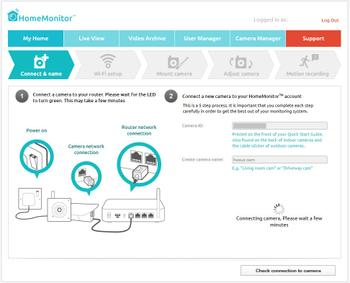 |
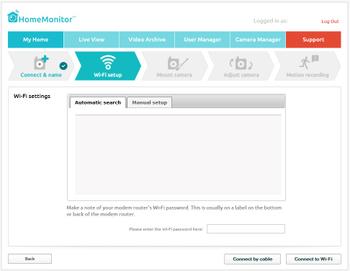 |
The Y-cam HomeMonitor HD only records footage when motion is detected within the configurable 'Trip Zone'. Continuous recording is possible if continuous motion takes place but this also means 24-hour surveillance isn't likely for most home users. Y-cam believes this solution minimises the excess recording since the only footage of interests to users should be that which involves movement - an intruder cannot break in without moving, for example.
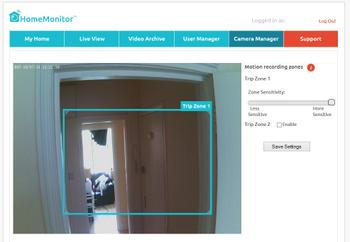 |
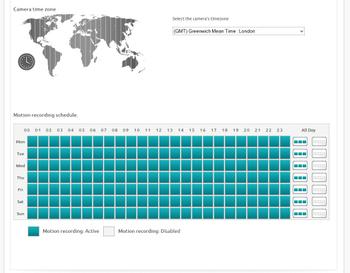 |
The trip zone is configured in terms of its size and sensitivity; the user can create multiple trip zones to cover multiple areas of surveillance, such as multiple doors in a hallway. To ensure only appropriate motion is recorded users can set a recording timetable and pair this up with email or app notifications to be informed about when motion takes place. Users are advised to configure the motion detection for periods of time when they are not expecting to be home, to ensure excess alerts aren't being received. There is an option to disable alerts if so desired.
 |
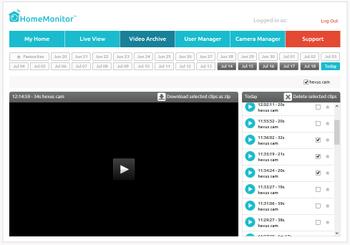 |
The web-interface also hosts a live-view function which allows the user to stream continuously from the Y-cam without recording. The video archive section of the web-interface provides the archive of all recorded clips. These are organised by day and by time and can be viewed from within the video archive tab. Users can download multiple files by ticking the appropriate boxes but the design of the video archive could certainly be a lot more intuitive. Primarily, the lack of a preview thumbnail for each clip makes searching through archived clips a tedious procedure and, secondly, select/deselect-all buttons would be useful for speeding-up the bulk download process.






